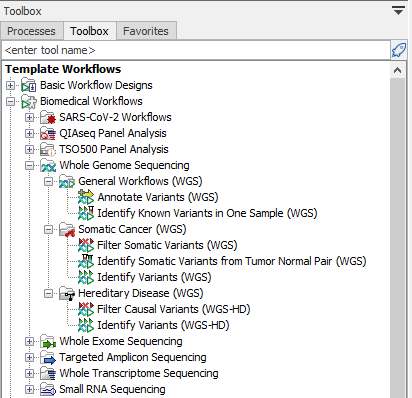Whole genome sequencing (WGS)
The most comprehensive sequencing method is whole genome sequencing that allows for identification of genetic variations and somatic mutations across the entire human genome. This type of sequencing encompasses both chromosomal and mitochondrial DNA. The advantage of sequencing the entire genome is that not only the protein-coding regions are sequenced, but information is also provided for regulatory and non-protein-coding regions.
A number of template workflows are available for analysis of whole genome sequencing data (figure 20.1). The concept of the pre-installed template workflows is that read data are used as input in one end of the workflow, and after running it, the workflow will output a Track List and a table with all the identified variants, which may or may not have been subjected to different kinds of filtering and/or annotation.

Figure 20.1: Workflows available for analyzing whole genome sequencing data.
In this chapter we will discuss what the individual template workflows can be used for and go through step by step how to run the workflows.
Remember you will have to prepare data with the Prepare Raw Data workflow described in Preparing Raw Data before you proceed to running any of these workflows.
Subsections
